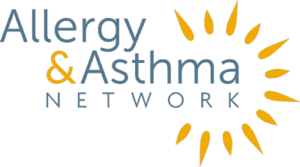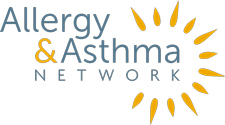Discover how current asthma prevalence on national, state and local levels can lead to disparities and affect social determinants of health.

The Asthma Equity Explorer is a free web-based database for asthma research. It provides information and insight on U.S. asthma prevalence based on social, economic and environmental factors that cause asthma. And it does so within the context of location and geography.
Allergy & Asthma Network partnered with MITRE to develop the Asthma Equity Explorer. It’s designed for researchers, scientists, health professionals and research students.
Visit AsthmaEquity.org to register and get started!
Quick Tips On the Asthma Equity Explorer:
- Registration is free. By registering, you will be able to use the database for research.
- When you register, you will be added to an email list for research news and updates. You may unsubscribe if you no longer want to receive these emails.
- Questions or comments about the database? Want to offer a suggestion on how we can improve the platform? Contact us at research@allergyasthmanetwork.org.
What is the Asthma Equity Explorer Research Database?
More than 25 million people in the United States have asthma, according to the U.S. Centers for Disease Control and Prevention (CDC).

The Asthma Equity Explorer allows you to go deeper into the data. Why do some communities have more asthma cases than others? Why are asthma triggers such as air pollution more common in certain areas of the country? Find out how health inequity and social determinants of health (SDOH) play a role in asthma.
For example, users of the database are able to access data on:
- socioeconomic factors
- particulate matter concentration in communities
- historical HOLC (Homeowners Loan Corporation) grades that address redlining in certain communities
- related asthma health measures on national, state, county, and city levels
How to use the Asthma Equity Explorer for real-world solutions? Community-level data can help inform asthma interventions, such as how to prevent as asthma attack. It can also help families make lifestyle decisions – such as choosing where to live or go to school.
Healthcare research beyond health statistics
Users of the database can chart asthma prevalence using up to 32 different variables, including:
- Population race/ethnicity
- Population income to poverty ratio
- Residential segregation: rent vs. own
- Education level
- Social and environmental: environmental quality, housing, and food scarcities
- Health outcomes: lack of access to healthy food, smoking, obesity prevalence, and poor mental health
How the Asthma Equity Explorer benefits Asthma Research
Use asthma data to gain a better understanding of prevalence and identify how to reduce developing asthma. Learn the factors that cause asthma disparities and impact social determinants of health.

The database includes:
- multiple geographic scopes
- interactive maps, tables, and visualizations
- interpretations and information buttons
Users can also download datasets and customized asthma reports for more in-depth analysis.
Asthma on a geographic level
The Asthma Equity Explorer breaks down geography three ways:
- National, broken down by state
- State, broken down by county
- County, broken down by census tract
Asthma heath determinant factors
There are six categories of factors to choose from:
- Health outcomes
- Race/ethnicity
- Education
- Income
- Residential segregation
- Social and environmental
Health outcomes may include asthma attacks, emergency department visits, hospitalizations and asthma mortality.
Register now, at no charge, to use the Asthma Equity Explorer database for your research work.
Use of the database requires free registration to allow for easy, secure login. All registration data will be kept private and not shared by Allergy & Asthma Network.
The Asthma Equity Explorer database is not intended to provide healthcare information. It does not offer insight or advice on asthma symptoms, diagnosis or treatment.

 810304 Eaton Place, Suite 100
810304 Eaton Place, Suite 100